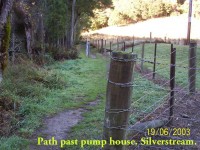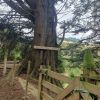 The Hereweka Harbour Cone block of 328ha where the Future Forest is, was bought by the DCC in 2008. Since 2015 it has been managed by the Hereweka Harbour Cone Charitable Trust Continue reading “Hereweka Harbour Cone Future Forest – Background Information”
The Hereweka Harbour Cone block of 328ha where the Future Forest is, was bought by the DCC in 2008. Since 2015 it has been managed by the Hereweka Harbour Cone Charitable Trust Continue reading “Hereweka Harbour Cone Future Forest – Background Information”
Category: General Information
General and background information like distances, access
Middlemarch Area Tramps
Information
Rock and Pillar via Six Mile Creek This climbs 1,005 m. (3300 feet) up the eastern face from Glencreag Station up a leading ridge south of Six Mile Creek. This is the most direct approach.
Rock and Pillar via spur south of Lug Creek. Information: Climbs 910 m. (3000 feet) up the eastern face of a well-graded vehicle track up a leading spur south of Lug Creek. Average time to Leaning Lodge is 3 hours on foot.
DoC access. 9.5km north of the Middlemarch store on SH87, just before Lug Creek, is a farm entrance (RAPID 7219 – no DoC sign). A short way up the driveway is a DoC car park. There is public access up the vehicle track to the conservation area boundary. The track is now a recreation reserve administered by DoC.
Easiest route to Big Hut from Leaning Lodge (foot only – unmarked – good visibility essential) is another 45+ minutes climbing gently southwards to cross a steep gully and then climb a gentle shelf to above the eastern basins. Sidle several hundred metres past the lower prominent rock tors before gently descending to Big Hut once it becomes visible. Route very wind and cloud-prone. Ice axe and crampons may be necessary to traverse steep snow slopes near Leaning Lodge.
64 km to Middlemarch. 66 km to Stonehurst Track.
Redan Crater- contact for access Ken Rennick.
Middlemarch Area – Information and Trips Library
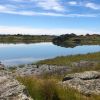 16. 06/12/2023. Hikers. Sutton Salt Lake – Glencreag Track. Grade 2.5. $16. 60km. Leaders: Wendy Langley/Katrina McKenzie
16. 06/12/2023. Hikers. Sutton Salt Lake – Glencreag Track. Grade 2.5. $16. 60km. Leaders: Wendy Langley/Katrina McKenzie
17 of us headed to Sutton where we walked the Sutton Lake loop. Continue reading “Middlemarch Area Tramps”
Midwinter Dinners – Information and Trips Library
Scope:
This page groups together the midwinter dinners / lunches hosted by the club. These events are often preceded by a walk and as such are included in the reports / photos relating to the walk that is submitted for publication.
Links to midwinter dinners:
02/07/2025. Mid Winter Lunch at Waihola. Grade 2. Combined. Leaders: Noel McRandle, Dave Roberts, Gwenda Farqharson, Karon Reid.
03/07/ 2024. Tunnel Beach, Concord Tavern Lunch – Mid Winter Catchup. Combined. Grade 2. Leaders: Phil and Helen Morris, Jay Devlin and Margaret Maxwell.
5 July 2023. 35th Birthday/ Mid winter lunch
Midwinter Dinner Occasions (2010-2020)
Midwinter Street Walk – Street Art (includes Midwinter dinners 2016-2021)
Waihola Walk (2017)
Opoho – Historical Background Notes
Opoho – ‘Here my head is level with hills and sky’ – (Janet Frame)
[These historical notes were prepared by Ross for our wanderings around Opoho on 1 June 2022 on a tour led by Neil and Margreet Simpson and Wyn and Ross Davies. Only parts of it were recounted as we zoomed around, and some asked for a chance to read a bit more about what was talked about. What follows is the whole lot.]
Name of Opoho
Maori have been present in the area for 800-900 years. Two groups of Maori ovens have been found on the contours of the hill, said to have been used by people of the Ngatiwairua.
Poho is said to have been a Ngatiwairua chief in the 1700s, head of a family occupying a small kaika (village) by the outlet of the stream which flows down the hill into what was once Pelichet Bay (now Logan Park). O-poho simply means ‘Poho’s place’ and it came to be applied to the neighbouring stream – Opoho Creek.
Later it was adopted by one of the early English landowners for a subdivision on the middle slopes beside where the stream flowed (the Logan Park side), and gradually the name became applied to the whole suburb (on both sides of the ridge).
Opoho Odyssey Part 1 – Botanic Gardens Top Car Park to Knox College
Lovelock Avenue
Formerly Cemetery Road because of the Northern Cemetery halfway down. Renamed Lovelock Avenue in 1968, after Jack Lovelock who lived in Opoho while studying medicine at Otago University. It was the street he ran down every day going to university. Jack Lovelock kept running, and broke the world record for the mile in 1933. He went on to win the gold medal in the 1500 metres at the Berlin Olympics in 1936 (the first Kiwi to win an Olympic track event).
Signal Hill Road
The most enduring street name in Opoho is Signal Hill Road. It appears on all the maps. The top of Signal Hill provides a good view of the harbour and may have given the Maori a place to watch for hostile war canoes and signal from. With European settlement, the same hill was used to signal immigrant ships and perhaps to announce their approach to Dunedin residents. It remains one of the best-known landmarks in Dunedin.
Opoho Road and Trams
The original Opoho subdivision, called Estate of Opoho, to form Opoho Township was created by Captain Boyd in 1873. We’re going to wander some of the streets of this Opoho Township this morning, making our way down to Knox College for a tour at 11am. Opoho Road was the southern boundary of the Opoho Township, originally called District Road. It was the first access to the suburb from the Gardens although there was also a road to Dundas Street down Lovelock Avenue. Opoho Road was too steep where it meets Signal Hill Road for the trams, so a new loop was created through part of the Upper Gardens where the road now goes. It was the steepest line attempted by electric trams. The terminus was at the corner of Signal Hill Road and Blacks Road, and that was steep too. At least two trams ran away from the terminus when the brakes failed – with serious consequences. The tramline opened in 1924. Continue reading “Opoho – Historical Background Notes”
Seacliff Hospital Fire (Backgound information)
Fire broke out at Seacliff Mental Hospital on 9 December, 1942. Ward 5, which housed 39 women patients, was quickly reduced to ashes. The fire killed all but 2 of the 39 women and was the worst fire in New Zealand until Ballantyne’s fire, five years later.
In 1884 the Seacliff Lunatic Asylum was opened at Seacliff, 28 kilometres up the coast from Dunedin. It provided housing for 500 patients and 50 staff, and at the time was the largest public building in New Zealand. At about 9:45pm on 8 December, 1942, fire broke out in Ward 5. This ward was a two-storeyed wooden building which had been added on to the original stone building when the hospital was expanded at the end of the nineteenth century. In Ward 5 were 39 women patients who had mental health problems. They were all locked into either single rooms or in the 20-bed dormitory. Most windows were locked, and could only be opened by a key from inside. It was during the Second World War, and there was a shortage of nursing staff. There was no nurse on duty in the ward at night, although checks were made by staff from other wards every hour. The fire was first noticed by a male attendant who raised the alarm and ran to bring the fire hoses and reels from the small hospital fire station to a fire hydrant near Ward 5. He was able to save one patient by pulling off the grating over her window and dragging her out. Another patient was rescued from the first floor. Both survivors were in rooms which did not have locked shutters on the windows. They were the only patients out of the 39 in Ward 5 to survive the fire. The hospital’s fire fighters tried to put out the fire, but it was too fierce, and within an hour only ashes remained of Ward 5. However they were able to stop the flames from spreading to other wooden buildings. 37 people died. A commission of inquiry found that the wooden building of Ward 5 was dangerous, and that, once the fire had started, it spread through the building very quickly. There were no automatic fire alarms in Ward 5, unlike in other newer parts of the hospital. Any alarm in the building had to be raised by unlocking a cabinet and pushing a button to start the fire alarm. The commission of inquiry criticised the design of the building and the way in which the windows were shuttered and locked from the inside at night. It recommended the installation of sprinkler systems in all psychiatric institutions. The commission also felt that there was not enough staff on duty to supervise the patients at night. The hospital fire brigade were praised for their action on the night, which prevented the loss of other lives. The cause of the fire was not discovered. A new mental hospital was opened at nearby Cherry Farm in 1954.The Seacliff Mental Hospital fire was the worst in New Zealand until Ballantyne’s fire, five years later.
With regard to the lives lost in the Seacliff fire, there was in fact a Memorial Plaque set up in the Andersons Bay Cemetery in December 2017, 75 years after the fire, with all the names of the victims on it. And a small plaque also at Seacliff. You can Google the articles and pictures of this from the ODT. (Additional note from comment on ‘Warrington – Seacliff’ post for hike 16/10/2024.)
Deep Creek Water Scheme Pipeline
The Deep Creek Water Scheme was built during the depression of the 30s.
The Pipeline is 58 years old and 64 km long.
The intake is 675m above sea level.
The catchment is 5420 hectares; mainly tussock with some grassland.
The steel pipeline, lined with bitumen, was in a bad state of repair by the 80s and the leaks were constantly plugged with tapered wooden plugs until it resembled a porcupine.
The authorities were eventually persuaded to renew the worst section, this being done with the aid of a helicopter in 1992. It is a useful supplement to Dunedin’s water supply.
The Pipeline is made of bitumen-lined steel excepting the first 1.4 km which was replaced in 1992 with concrete pipes.
Water quality is variable and often discoloured.
Over the 58 years the yield has dropped from 11,000 cubic metres to 6,800 cubic metres a day.
The water goes to Booth Road Treatment Station and Sullivans Dam.
Replacing the rest of the pipeline is estimated at $20,000,000 and would increase the flow to 17,000 cubic metres a day.
– From a hand-written record in the President’s file and supplemented with other data.
The stone-wall ruins on the McKessar Track
The stone-walled house was burnt out by a bushfire in 1914 after the McKessar family had left the district and the farm had been taken over by a neighbour.
George and Emma (Driver) McKessar had lived and farmed there. George was born in 1836 and Emma in 1853 and they had six children. Emma was a child of Richard and Elizabeth (Robertson) Driver. Richard was the first official pilot for Otago Harbour, and she had been born at the pilot house at Taiaroa Head. She died at Purakanui at 47 in 1900 and George at 75 in 1912. – edited from research by Clive Crossman on various websites.
Deep Stream Water Supply
Brinns Point to Seacliff
Split Rock
Maori Peak background information
Puketeraki Beach
Leith Saddle Board Walk Change
An email received by the Secretary this morning reveals that DOC “have cut up hundreds of metres of serviceable board walk”. Continue reading “Leith Saddle Board Walk Change”
Burns-Rustler track-crossing original signs
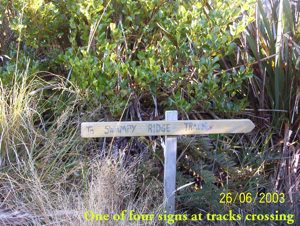
Rustlers Ridge, Burns Track, Swampy Spur, Transmitter Tower – Information and Trips Library
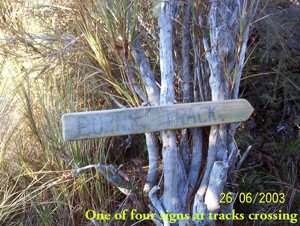
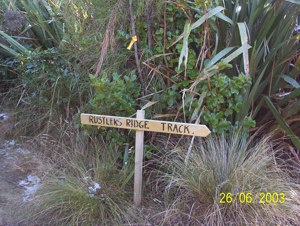
Former Foot-bridge over Silverstream. Also Swing-bridge
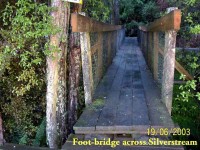
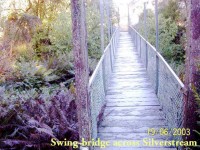
Continue reading “Former Foot-bridge over Silverstream. Also Swing-bridge”

